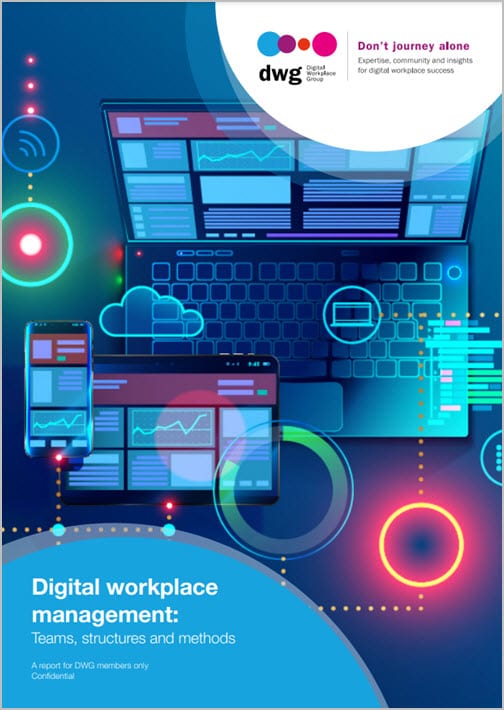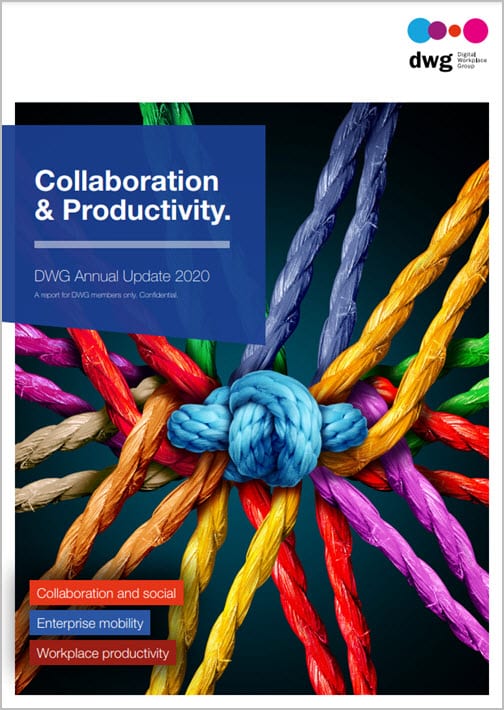The hybrid workplace and return to the office; 10 approaches to consider
We’re still not out of the woods. The pandemic continues to ravage parts of the world – and even in places where COVID-19 is more under control, uncertainty and lockdown conditions remain. However, we are seeing substantial progress in vaccination programmes, which means a return to the office and the implementation of hybrid working patterns are now coming more into focus. Many organizations are actively planning their return or partial return to the office, while at the same time considering the longer-term view of remote and hybrid working.
The return to the office and the wider debate about the future of hybrid work are generating a lot of media attention and debate. Opinions can be quite polarized too – do we return to the ‘old world’ before the pandemic or can we try to forge something better? How do we manage remote working in the long term and what will be its impact? There aren’t necessarily any clear answers and there are certainly associated opportunities and challenges – organizations have a lot to think about.
Here are 10 approaches to supporting the hybrid workplace and return to the office that may be worth considering. Note that some of these points are my own personal view, so you may not necessarily agree!
1. Consider this as an evolution, not a reset
Some observers have positioned the opportunity to rethink policies and approaches to various aspects of the workplace as a great ‘reset’. I can see the idea behind the term – it stresses the idea of starting again, being bold and doing things right. However, personally I dislike the word – a technology-centric word applied to a people-centred issue.
I also don’t believe this is a reset. We’re not starting again. The return to the office and the hybrid working patterns that are likely to be more prevalent are an evolution of what has gone before. These are still the same employees, the same leaders, the same offices (perhaps with some adjustments) and the same digital workplace, albeit rather scaled up. Remote working was already happening and the pandemic was always more of a catalyst for existing trends, although accelerating and scaling remote work to unprecedented levels.
The decisions we make now build on existing successes, structures, approaches and organizational culture. Yes, be bold, but it’s not a reset that ignores everything built to date.
Related resource
 | Digital workplace management: |
2. Listen to employees and gather data
If you’re not already conducting some kind of research or survey into how employees feel about returning to the physical workplace, then start doing so tomorrow. The actions organizations take in order to enable the return to the office, as well as in developing longer-term policies that support hybrid working, cannot be built on assumptions.
It’s critical that a data-driven approach that can override the polarized debates and also take into account what employees are experiencing and feeling is adopted. Are they itching to get back to the office? How often would they want to work from home? What are the associated opportunities and challenges? And how are sentiments changing over time in a still relatively fluid situation? This kind of information needs to feed into decision-making. Digital workplace teams can play a valuable role here in scoping user research, demonstrating best practices and providing the tools required to carry out research remotely and on a regular basis.
It’s also worth noting that any workforce is highly diverse – but a global workforce even more so. When listening to employees, taking into account local circumstances, culture and differing opinions is very important.
Related resource
 | Employee experience: How digital workplace teams can enhance the employee journey Download the free report excerpt |
3. Make choice a fundamental principle of the hybrid workplace
To return to the office or not return to the office is not necessarily a binary decision; actually, most organizations are predicting hybrid working patterns that enable employees to work both at home and in the office, perhaps in the same week. Here, individual choice and flexibility are important, allowing people to enjoy the benefits of both working environments and to choose what works well for their personal situation. Moreover, having some choice of where you work on a given day may become a strong part of any employee value proposition.
While researching the recently published book Nature of Work, co-authored by Paul Miller and Shimrit Janes, I was lucky enough to interview Ryan Anderson, Herman Miller’s VP of Global Research & Insights. Anderson is a recognized authority on hybrid working and highlighted the power of choice in returning to the office. He explained:
“…what organizations will realize is that they may have thought about employees as being either assigned to an office or remote teleworkers – but, in fact, it’s much blurrier than that. Realistically, what we’re going to see for a majority of the workforce is more autonomy to choose where they work. And a percentage of that will be in a corporate office facility, as long as these are designed to support important experiences that can be had elsewhere.”
Related resource
 | Nature of Work: The new story of work for a living age. Buy the book |
4. Optimize your existing digital workplace channels
Digital workplaces and their respective tools and channels can play a significant role in supporting employees in their return to work. Indeed, there has recently emerged a range of apps dedicated to just this. From great intranets that supply clear communication, to apps that help you book into an office, to desk booking systems, to left-field wellness trackers – there are now huge opportunities to optimize your existing digital workplace.
A key challenge will be in supplying the right tools to allow people who are working in the office as well as those working at home to collaborate seamlessly, wherever they are.
5. Work with the real estate function as one team
A parallel process to optimizing your digital workplace for hybrid working and the return to work is to make sure it is also working in harmony with your office. For example, do your meeting rooms have the right kit to support far greater levels of online collaboration? In this, a close partnership between the real estate function and the digital workplace and IT teams is key, with both adopting a holistic approach including strategies and tactics that complement each other and support employees.
Related resource
 | Nature of Work: Designing at the interface of the physical and digital workplace Download the full report |
6. Cancel that homeworking surveillance software now
In the media there are occasional reports of companies using tracking and surveillance software to ensure that people working at home are putting in the hours. The software works by recording keystrokes, taking shots of screens and even installing webcams at home to make sure people are sitting at their desks. In my opinion this is a gross invasion of privacy, sends out the message that employees cannot be trusted, and completely misreads the room of how employees are feeling in 2021. Please cancel that surveillance software at the earliest opportunity. Productivity and efficiency are important, but is spying on employees and eroding all trust the best way to achieve that?
Related resource
 | Collaboration & Productivity: DWG Annual Update Download the free report excerpt |
7. Navigate challenges around meetings
One of the most challenging aspects of hybrid working is how to facilitate meetings. Conducting highly effective meetings between those in the office and those working remotely can be challenging, and in practice entirely virtual or all face-to-face meetings are usually the best options.
Another challenge is how to organize physical meetings and in-person events with everyone who needs to be there. With hybrid working, there is the added complication that you must have everyone in the office at the same time – and co-ordinating that aspect needs a lot of planning upfront. DWG consultant Chris Tubb has written about this conundrum and the associated practicalities, and believes it may result in there being far more remote meetings despite some people being in the office.
Paul Miller also shares some tips around meetings in his blog: 20 little lessons for successful remote working – based on (almost) 20 years’ experience at DWG
8. Consider a Head of Remote Work
The return to the office and the accompanying normalization of hybrid working patterns impacts multiple stakeholders in your organization and has a lot of moving parts. To truly embed remote working, organizations need to consider everything from the tools and infrastructure to support it, through to culture and attitudes. It can make sense to have a role to oversee all the different aspects of remote working and drive that alignment and change; a Head of Remote Work may become a role we see increasingly often.
9. Don’t lose sight of the environmental benefits of hybrid work
The focus on the pandemic has perhaps made us forget another crisis that needs to be front of mind – climate change. The environmental benefits of hybrid working are considerable, primarily through the reduction of business travel and commuting. This should absolutely be a factor in any decision-making.
It’s a topic we’ve touched upon frequently here at DWG. One of the points in our Decade of Courage Manifesto was to reduce all work travel, and recently Paul Miller was quoted in a CMSWire article describing the importance of reducing air travel:
“Our mindset, well-being and culture should place ecological preservation and protection front and center, alongside the physical and mental health impacts of routine, often thoughtless, air travel… Keep the flights for rare and significantly important or crucial physical meetings that require travel across long distances. Explain that this is ‘company policy, driven by ecological and health reasons post pandemic.’”
Related resource
 | Decade of Courage Manifesto: DWG’s 12 action points for essential workplace transformation. Download the full report |
10. Provide clarity and transparency
Perhaps above all, the return to the office needs to be built on clear messages that spell out the relative policies and expectations. Clarity from leaders instils confidence, removes ambiguity and ensures everyone follows the right processes in a still stressful time. CEOs should also be transparent about the longer-term situation – if policies are still being decided, then say so.
Related resource
 | Communicating in real-time at work: The promise and the perils Download the free report excerpt |
Returning to the office
Returning to the office is a focus for many organizations and refining successful hybrid working will take even longer. We hope some of the approaches mentioned in this article will help kickstart your thinking and the right conversations.
Related resource
Tips to build a thriving company culture as we emerge into a new world of work
Talk to us about…
… becoming a DWG member
Learn about DWG Membership
Categorised in: → Nature of Work, → Remote working

